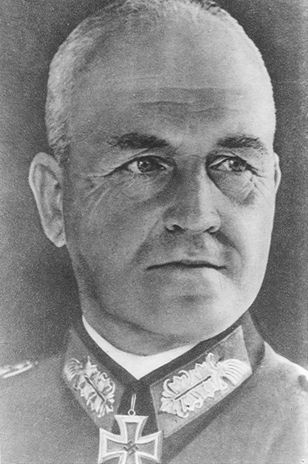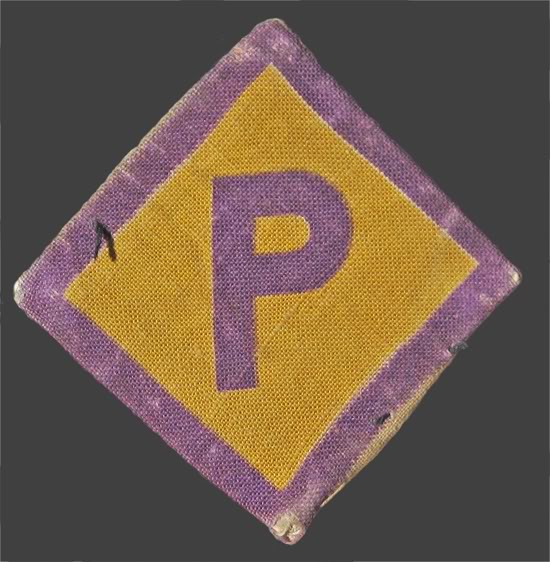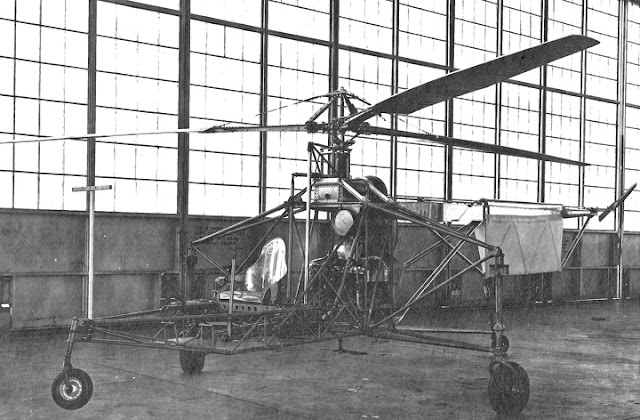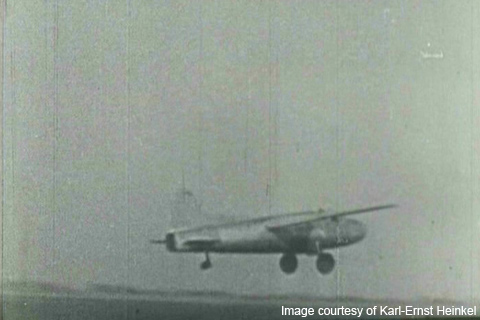Tuesday 18 February 1941
 |
| HMS Dido, first of the Dido class of Royal Navy cruisers, in the Firth of Forth during February 1941. |
Italian/Greek Campaign: There is little ground fighting aside from artillery barrages on 18 February 1941. The RAF raids Italian airfields in the Dodecanese Islands.
East African Campaign: In Abyssinia, the South African forces from Kenya have been advancing on Mega for some time. Today, they quickly take it, netting about a thousand prisoners. This opens the main road to Addis Ababa. On the Juba River line, the Italians counterattack the South African 1st Infantry Brigade.
European Air Operations: Activity is light today again due to the continuing poor weather. A few Luftwaffe planes drop a few bombs and strafe a train in East Anglia.
RAF Bomber Command bombed Basel, Switzerland on 16 December 1940, killing four women. It also bombed Zurich on 22 December, killing 22 people. Today, the British ambassador delivers a note to the Swiss Federal Council in Bern expressing "deep regret" for these attacks and agreeing to pay for damages. Later scholarship suggests that at least the first bombing wasn't quite as accidental as the British pretended at the time; they were targeting a ball-bearing factory in Basel which was suspected of supplying the German war machine. As with many aerial attacks of the time, the bombers completely missed the factory and hit a residential area instead.
U-96 (Kapitänleutnant Heinrich Lehmann-Willenbrock) is having a successful third patrol out of Lorient. at 02:27, it puts a torpedo into 5589-ton British freighter Black Osprey, a straggler from Convoy HX 107. When the ship doesn't sink immediately, Lehmann-Willenbrock puts a second torpedo into it and it sinks at 02:39. That does the trick. Despite being in a convoy, due to the poor weather, there are only 11 survivors while 26 men perish. Many of the survivors are half-dead from exposure when found by Norwegian freighter Mosdale after being adrift for only 53 hours.
U-103 (Kptlt. Viktor Schütze) also is having a successful patrol. It torpedoes and sinks 5459-ton British freighter Seaforth. All 59 men on board perish.
The Luftwaffe attacks and damages 10,354-ton Dutch tanker Taria in the Northwest Approaches. The tanker makes it to Rothesay Bay.
The 8651-ton refrigerated cargo ship Duquesa (renamed Herzogin upon capture by the Germans), known to the Kriegsmarine as a "floating delicatessen" due to its extensive supplies of fresh meat and dairy products, is scuttled in the south Atlantic by supply ship Nordmark. This is due to no more fuel being available to maintain its refrigeration systems.
Vichy French 286-ton auxiliary minesweeper Marie Gilberte (AD 158) is lost this date from unknown causes.
In Convoy SC 21, British 4297-ton steel/vehicles freighter Middleton collides with Norwegian freighter Tungsha. The Middleton gets the worse of the encounter and sinks, but the crew survives.
Convoy OB 288 departs from Liverpool, Convoy SC 23 departs from Halifax, convoy SL 66 departs from Freetown.
Royal Navy destroyer HMS Gurkha (G 63, Commander Charles N. Lentaigne) and corvette HMS Veronica (K 37) are commissioned.
U-203 (Kapitänleutnant Rolf Mützelbur) is commissioned, U-502 is launched.
Battle of the Mediterranean: General Rommel's forces in Tripolitania pursuant to Operation Sunflower receive their new title: Afrika Korps. General Rommel formally organizes the 5th Light Division in Tripolitania. Already his forces have encountered advance British forces at Sirte, but the British have stopped advancing.
The Italian air force stages a massive raid against Benghazi. Combined with other recent raids to mine the harbor, this compels the British to close the port and rely upon Tobruk and other ports further east. Since the British are not advancing any more, this is not a major problem.
In any event, the British are looking east, not west. British Middle East Commander General Archibald Wavell briefs General Thomas Blamey, General Officer Commanding I Australian Corps, on his plans for Greece. Wavell is planning to send 2nd New Zealand Division, the 1st Armored Brigade, the Independent Polish Brigade, and the 6th and 7th Australian Divisions, all commanded by the 1st Australian Corps. This is to be called "Lustre Force."
Wavell tells Blamey that he already has talked to Australian Prime Minister Robert Menzies about this - which, if so, Menzies only refers to obliquely in his voluminous diary (and he has quite a bit to say about it when he finally reaches London later in February). They did indeed talk recently in Cairo, though whether or not Wavell told Menzies about the extent of this operation is unknown. Menzies might choose not to discuss the issue in his diary for security concerns (though he talks about everything else), so its absence there is not determinative. However, just how honest Wavell is being when he implies the Australian government is already solidly behind this plan remains somewhat murky.
New Zealand Major General Bernard Freyberg already has been briefed about this Lustre Force operation, and much later comments:
The Luftwaffe mines the Suez Canal again. The first operation was quite successful, and so is this one. Royal Navy aircraft carrier HMS Formidable is ready to pass the canal to join the Mediterranean Fleet, but this keeps it in the Red Sea.
The Free French under Colonel Leclerc in southwest Libya continue investing the fortress at Kufra. The fortress of El Tag is well-defended with hundreds of soldiers, but the reserve captain commanding the Italian troops is unprepared. The French have the advantage of a 75 mm field gun which is firing away from 3 km away, as well as mortars sited 1.5 km away.
In Malta, the Admiralty declares a wide zone between North Africa, Italy, and Sardinia an area where surface vessels can be attacked on sight. This greatly expands the area from the original unrestricted warfare zone in the Adriatic.
Battle of the Pacific: Thousands of Australian troops arrive at Singapore aboard the Queen Mary. The men are from General Gordon Bennett's Australian 8th Infantry Division, including parts of the 22nd Infantry Brigade (2/18th, 2/19th, and 2/20th Battalions).
Norwegian/Finnish Relations: Oberst Erich Buschenhagen, Norwegian military Chief of Staff, visits Finland for consultations. The two countries share a border in the far north and thus have mutual defense issues. However, the real purpose of the talks is to probe Finnish willingness to join Operation Barbarossa against the Soviet Union.
German Military: Adolf Hitler calls a meeting at the Berghof relating to tank designs in the Panzerwaffe (armored forces). He asks the Generals and industry men there to up-gun the Mark III and Mark IV tanks - the main battle tanks of the Wehrmacht, the Panzer I and II now being considered obsolete. Specifically, he wants a 60 mm gun in the Panzer III and a 75 mm gun in the Panzer IV. The tank designers object. General Keitel also objects that the project would require 20,000 skilled workers that are not available. Hitler brooks no objections, however, and tells everyone to get moving on the project, find men for the work and train them. This is a critical decision that dramatically improves the Wehrmacht's prospects in Operation Barbarossa.
This is a significant meeting because it punctures holes in two pet theories by some historians. First, apparently, there is no mention at this meeting of building a much larger tank. This explodes the claims by some latter-day historians that Hitler ordered work done on the Tiger tank due to British tanks encountered in France almost a year before this meeting. The urgency lies in simply improving the existing stock of panzers, which the military leaders agree should be good enough already but, well, improvements are never a bad thing, so why not?
Second, the meeting shows that, at least at this point in the war, Hitler really does have better ideas than his generals and others in some military areas. In hindsight, there is absolutely no question that the panzers need to be upgraded in order to tackle the tasks allotted to them. While the Wehrmacht has all sorts of difficulties later in the year, they would have been far worse if the work had not begun now on improving the panzerwaffe. Not upgrading the panzers before Operation Barbarossa would have been a cataclysmic error - and much more work should have been done in this error beyond simply putting new guns in the existing panzers.
US Military: The US Coast Guard Reserve is established.
Rear Admiral William P. Blandy becomes Chief of the Bureau of Ordnance.
US Government: Averill Harriman becomes President Roosevelt's latest choice to be his special representative in London.
Australian Government: Prime Minister Menzies continues his epic journey from Melbourne to London. Today, he flies from Lagos to Freetown, which he describes as "a considerable and modern looking town with a fine spacious harbor." In a great coincidence (see above), Menzies repeats his disdain for Wavell:
Spanish Homefront: Fires have been raging at Santander. They leave 35,000 people homeless. This gives some strength to Francisco Franco's arguments to Hitler that Spain is not ready to enter the conflict.
Dutch Homefront: The atmosphere remains tense in Amsterdam, where German soldiers and Dutch police have been battling to retain control. While not quite an uprising, there have been numerous street incidents over the past week, with rebels taking control of certain locations.
February 1941
February 1, 1941: US Military Reorganization
February 2, 1941: Wehrmacht Supermen
February 3, 1941: World Will Hold Its Breath
February 4, 1941: USO Forms
February 5, 1941: Hitler Thanks Irish Woman
February 6, 1941: Operation Sunflower
February 7, 1941: Fox Killed in the Open
February 8, 1941: Lend Lease Passes House
February 9, 1941: Give Us The Tools
February 10, 1941: Operation Colossus
February 11, 1941: Afrika Korps
February 12, 1941: Rommel in Africa
February 13, 1941: Operation Composition
February 14, 1941: Nomura in Washington
February 15, 1941: Churchill's Warning
February 16, 1941: Operation Adolphus
February 17, 1941: Invade Ireland?
February 18, 1941: Panzerwaffe Upgrade
February 19, 1941: Three Nights Blitz
February 20, 1941: Prien's Farewell
February 21, 1941: Swansea Blitz Ends
February 22, 1941: Amsterdam Pogrom
February 23, 1941: OB-288 Convoy Destruction
February 24, 1941: Okuda Spies
February 25, 1941: Mogadishu Taken
February 26, 1941: OB-290 Convoy Destruction
February 27, 1941: Operation Abstention
February 28, 1941: Ariets Warns Stalin
2020
East African Campaign: In Abyssinia, the South African forces from Kenya have been advancing on Mega for some time. Today, they quickly take it, netting about a thousand prisoners. This opens the main road to Addis Ababa. On the Juba River line, the Italians counterattack the South African 1st Infantry Brigade.
European Air Operations: Activity is light today again due to the continuing poor weather. A few Luftwaffe planes drop a few bombs and strafe a train in East Anglia.
RAF Bomber Command bombed Basel, Switzerland on 16 December 1940, killing four women. It also bombed Zurich on 22 December, killing 22 people. Today, the British ambassador delivers a note to the Swiss Federal Council in Bern expressing "deep regret" for these attacks and agreeing to pay for damages. Later scholarship suggests that at least the first bombing wasn't quite as accidental as the British pretended at the time; they were targeting a ball-bearing factory in Basel which was suspected of supplying the German war machine. As with many aerial attacks of the time, the bombers completely missed the factory and hit a residential area instead.
U-96 (Kapitänleutnant Heinrich Lehmann-Willenbrock) is having a successful third patrol out of Lorient. at 02:27, it puts a torpedo into 5589-ton British freighter Black Osprey, a straggler from Convoy HX 107. When the ship doesn't sink immediately, Lehmann-Willenbrock puts a second torpedo into it and it sinks at 02:39. That does the trick. Despite being in a convoy, due to the poor weather, there are only 11 survivors while 26 men perish. Many of the survivors are half-dead from exposure when found by Norwegian freighter Mosdale after being adrift for only 53 hours.
U-103 (Kptlt. Viktor Schütze) also is having a successful patrol. It torpedoes and sinks 5459-ton British freighter Seaforth. All 59 men on board perish.
The Luftwaffe attacks and damages 10,354-ton Dutch tanker Taria in the Northwest Approaches. The tanker makes it to Rothesay Bay.
The 8651-ton refrigerated cargo ship Duquesa (renamed Herzogin upon capture by the Germans), known to the Kriegsmarine as a "floating delicatessen" due to its extensive supplies of fresh meat and dairy products, is scuttled in the south Atlantic by supply ship Nordmark. This is due to no more fuel being available to maintain its refrigeration systems.
Vichy French 286-ton auxiliary minesweeper Marie Gilberte (AD 158) is lost this date from unknown causes.
In Convoy SC 21, British 4297-ton steel/vehicles freighter Middleton collides with Norwegian freighter Tungsha. The Middleton gets the worse of the encounter and sinks, but the crew survives.
Convoy OB 288 departs from Liverpool, Convoy SC 23 departs from Halifax, convoy SL 66 departs from Freetown.
Royal Navy destroyer HMS Gurkha (G 63, Commander Charles N. Lentaigne) and corvette HMS Veronica (K 37) are commissioned.
U-203 (Kapitänleutnant Rolf Mützelbur) is commissioned, U-502 is launched.
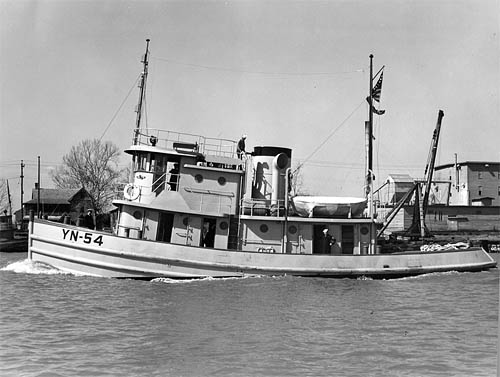 |
| Harbor tug USS Noka (YN-54), acquired and commissioned 18 February 1941. |
The Italian air force stages a massive raid against Benghazi. Combined with other recent raids to mine the harbor, this compels the British to close the port and rely upon Tobruk and other ports further east. Since the British are not advancing any more, this is not a major problem.
In any event, the British are looking east, not west. British Middle East Commander General Archibald Wavell briefs General Thomas Blamey, General Officer Commanding I Australian Corps, on his plans for Greece. Wavell is planning to send 2nd New Zealand Division, the 1st Armored Brigade, the Independent Polish Brigade, and the 6th and 7th Australian Divisions, all commanded by the 1st Australian Corps. This is to be called "Lustre Force."
Wavell tells Blamey that he already has talked to Australian Prime Minister Robert Menzies about this - which, if so, Menzies only refers to obliquely in his voluminous diary (and he has quite a bit to say about it when he finally reaches London later in February). They did indeed talk recently in Cairo, though whether or not Wavell told Menzies about the extent of this operation is unknown. Menzies might choose not to discuss the issue in his diary for security concerns (though he talks about everything else), so its absence there is not determinative. However, just how honest Wavell is being when he implies the Australian government is already solidly behind this plan remains somewhat murky.
New Zealand Major General Bernard Freyberg already has been briefed about this Lustre Force operation, and much later comments:
There was no question of our being asked if we agreed. We attended and were given instructions to get ready to go … At that meeting my opinion was never asked. I was told the bare facts … In any case I never expected to be asked my opinion by the Commander-in-Chief [Wavell]. He was far from co-operative. He had the secrecy mania.David Horner, High Command — Australia’s Struggle for an Independent War Strategy, 1939–1945, Sydney, 1982, p.67. In Wavell's defense, he knows about Ultra and is honor-bound to treat the source of his information with the utmost secrecy.
The Luftwaffe mines the Suez Canal again. The first operation was quite successful, and so is this one. Royal Navy aircraft carrier HMS Formidable is ready to pass the canal to join the Mediterranean Fleet, but this keeps it in the Red Sea.
The Free French under Colonel Leclerc in southwest Libya continue investing the fortress at Kufra. The fortress of El Tag is well-defended with hundreds of soldiers, but the reserve captain commanding the Italian troops is unprepared. The French have the advantage of a 75 mm field gun which is firing away from 3 km away, as well as mortars sited 1.5 km away.
In Malta, the Admiralty declares a wide zone between North Africa, Italy, and Sardinia an area where surface vessels can be attacked on sight. This greatly expands the area from the original unrestricted warfare zone in the Adriatic.
 |
| "HMS SCIMITAR (H21) on escort duty in the North Atlantic." Photo taken 18 February 1941, convoy ships in the distance. © IWM (HU 110297). |
Norwegian/Finnish Relations: Oberst Erich Buschenhagen, Norwegian military Chief of Staff, visits Finland for consultations. The two countries share a border in the far north and thus have mutual defense issues. However, the real purpose of the talks is to probe Finnish willingness to join Operation Barbarossa against the Soviet Union.
 |
| Panzer Deine Waffe! |
This is a significant meeting because it punctures holes in two pet theories by some historians. First, apparently, there is no mention at this meeting of building a much larger tank. This explodes the claims by some latter-day historians that Hitler ordered work done on the Tiger tank due to British tanks encountered in France almost a year before this meeting. The urgency lies in simply improving the existing stock of panzers, which the military leaders agree should be good enough already but, well, improvements are never a bad thing, so why not?
Second, the meeting shows that, at least at this point in the war, Hitler really does have better ideas than his generals and others in some military areas. In hindsight, there is absolutely no question that the panzers need to be upgraded in order to tackle the tasks allotted to them. While the Wehrmacht has all sorts of difficulties later in the year, they would have been far worse if the work had not begun now on improving the panzerwaffe. Not upgrading the panzers before Operation Barbarossa would have been a cataclysmic error - and much more work should have been done in this error beyond simply putting new guns in the existing panzers.
US Military: The US Coast Guard Reserve is established.
Rear Admiral William P. Blandy becomes Chief of the Bureau of Ordnance.
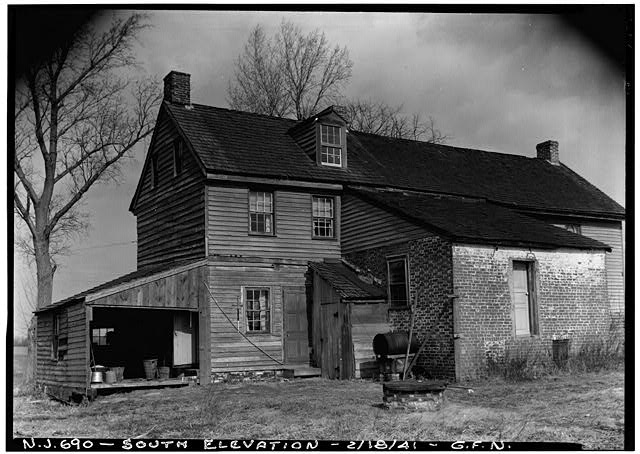 |
| This is a picture from a Historic American Buildings Survey by photographer George Neuschafer taken on 18 February 1941. This is the Morris-Goodwin House, Fort Elfsboro Road, Salem, Salem County, NJ. (Library of Congress). |
Australian Government: Prime Minister Menzies continues his epic journey from Melbourne to London. Today, he flies from Lagos to Freetown, which he describes as "a considerable and modern looking town with a fine spacious harbor." In a great coincidence (see above), Menzies repeats his disdain for Wavell:
It all takes me back to the Libyan campaign - Wavell will get a peerage and a place in history, while O'Connor will get a C.B.!Holocaust: IG Farben meets with Schlesien-Benzin Co. The topic is creating a Buna Werke (factory) to manufacture synthetic oil. The locations discussed Auschwitz, which one of the Schlesien-Benzin directors (Josenhans) comments:
The inhabitants of Auschwitz consist of 2000 Germans, 4000 Jews and 7000 Poles... The Jews and Poles, if industry is established there, will be turned out, so that the town will then be available for the staff of the factory... A concentration camp will be built in the immediate neighbourhood of Auschwitz for the Jews and Poles.There already is a camp at Auschwitz, but the company men are dismayed by the quality of the potential labor force there. However, Reichsmarschall Hermann Goering also approves the use of the Auschwitz workers today and feels they are good enough, so construction is soon underway.
Spanish Homefront: Fires have been raging at Santander. They leave 35,000 people homeless. This gives some strength to Francisco Franco's arguments to Hitler that Spain is not ready to enter the conflict.
Dutch Homefront: The atmosphere remains tense in Amsterdam, where German soldiers and Dutch police have been battling to retain control. While not quite an uprising, there have been numerous street incidents over the past week, with rebels taking control of certain locations.
 |
| Thomas Maskell Store, Main & Pine Streets, Greenwich, Cumberland County, NJ, 18 February 1941 (George Neuschafer, Library of Congress). |
February 1, 1941: US Military Reorganization
February 2, 1941: Wehrmacht Supermen
February 3, 1941: World Will Hold Its Breath
February 4, 1941: USO Forms
February 5, 1941: Hitler Thanks Irish Woman
February 6, 1941: Operation Sunflower
February 7, 1941: Fox Killed in the Open
February 8, 1941: Lend Lease Passes House
February 9, 1941: Give Us The Tools
February 10, 1941: Operation Colossus
February 11, 1941: Afrika Korps
February 12, 1941: Rommel in Africa
February 13, 1941: Operation Composition
February 14, 1941: Nomura in Washington
February 15, 1941: Churchill's Warning
February 16, 1941: Operation Adolphus
February 17, 1941: Invade Ireland?
February 18, 1941: Panzerwaffe Upgrade
February 19, 1941: Three Nights Blitz
February 20, 1941: Prien's Farewell
February 21, 1941: Swansea Blitz Ends
February 22, 1941: Amsterdam Pogrom
February 23, 1941: OB-288 Convoy Destruction
February 24, 1941: Okuda Spies
February 25, 1941: Mogadishu Taken
February 26, 1941: OB-290 Convoy Destruction
February 27, 1941: Operation Abstention
February 28, 1941: Ariets Warns Stalin
2020







